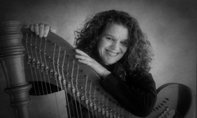- About Us
- Columns
- Letters
- Cartoons
- The Udder Limits
- Archives
- Ezy Reading Archive
- 2024 Cud Archives
- 2023 Cud Archives
- 2022 Cud Archives
- 2021 Cud Archives
- 2020 Cud Archives
- 2015-2019
- 2010-2014
- 2004-2009
 |
The Cud Music Review: |
Back in the 1970s, I played Henry Lawson in an amateur production out in the bush. The play told of Lawson’s wasted years in England and I portrayed a dishevelled writer the worse for drink. I had few lines, but watched as characters from my stories and poems created cameo scenes. That wooden role could not be further from the sophisticated performance given by experienced actor Kim Deacon at Bathurst Regional Art Gallery on 29 August. Showing the skill that won her parts in films such as Winter of Our Dreams and The Getting of Wisdom and a string of television series, Deacon captivated the audience with a performance she wrote herself, focussing on the women in Lawson’s life. These include Lawson’s mother Louisa, editor of The Dawn, baby sister Nettie who died in infancy, love interest Hannah Thorburn, long suffering wife Bertha and daughter Bertha, friend Mary Cameron (Dame Mary Gilmore) and patron Isabel Byers.
The CD Home Sweet Home features songs from the stage show. Kim Deacon is a multi-instrumentalist and in her show played two harps, banjo, guitar and keyboard. The harps include a 22 string Denwar harp from Bellingen and a 38 string Brendan Lassells harp, from Harps and Harps in Gosford. Both are ‘folk’ instruments with levers rather than pedals to change keys, making Deacon a harper in the traditional mode. Her only other accompaniment was of appropriate slides of the period projected behind her. The Gallery exhibits at the time included The Greatest Wonder of the World, the NSW State Library’s tribute to the Holtermann Collection, which contains photographs of Gulgong and other places Lawson knew. Deacon and Lino Alvarez are La Paloma Pottery at Hill End and Deacon says that the local ‘landscape, people and history’ inspired her exploration of Lawson and the women in his life.
On the CD, Deacon included other musicians - Marcus Holden (fiddle and mandolin), Garry Steel (accordion and piano), Keiran Swan-Colton (guitar), Ron Ferrin (euphonium and trombone) and Jim Conway (harmonica). While the one-woman show was spellbinding enough, the CD has a rich sound and highlights Deacon’s vocals very well indeed.

Recorded sounds such as the calls of Kookaburra and Magpie and distant thunder further enhance the CD. Deacon expresses the hope that Lawson would understand and accept any licence she has taken in these arrangements. I think that he would be very pleased both with the treatment of specific poems and with the album’s overall theme.
Many Australians regard Henry Lawson (1867-1922) as the best chronicler of the age of settlement. His life spans the period from the gold rushes when the non-Indigenous population expanded tenfold, through the drought and depression years of the 1890s and the great labour struggles around the establishment of unionism, federation and on past Gallipoli. Works on the CD include ‘Waterlily’, ‘A Mate Can Do No Wrong’, ‘Freedom on the Wallaby’, and ‘The Roaring Days’. Most of the tracks might be described as ‘poignant’, but there is robust humour in ‘When Bertha Came to Tea’. While folk audiences know other musical settings for Lawson’s poems, they will appreciate the sensitivity of these arrangements and the passion in Deacon’s voice. She has re-created a singing style which Lawson would recognise.
Kim Deacon’s Home Sweet Home might well inspire people unfamiliar with Lawson’s poems and stories to take an interest in this important writer. It is rare to find such an evocative compilation and Home Sweet Home is a very useful addition to the Henry Lawson collection.
Tony Smith (on the Limekilns Road toward Wattle Flat ...)
